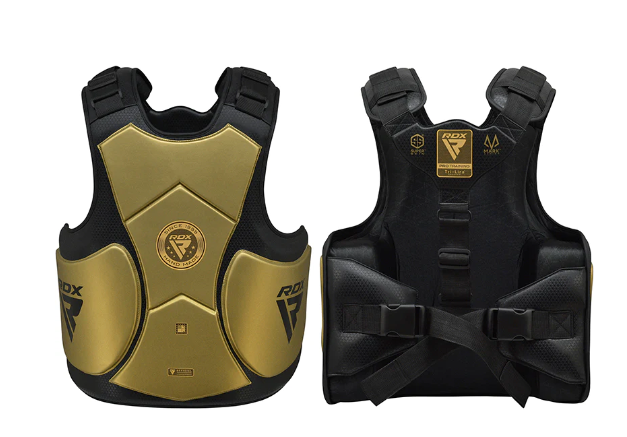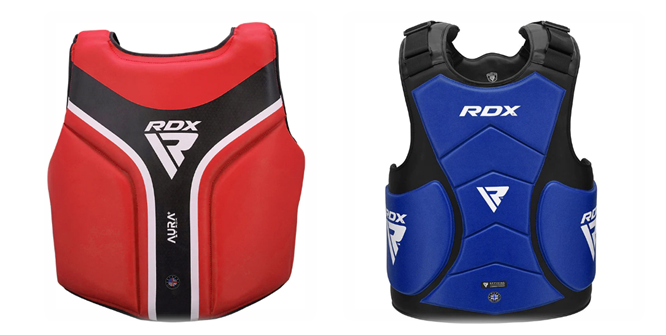
Chest guards are essential protective gear worn by athletes in various sports to shield their chest and torso from potential impact injuries. Whether in contact sports like football and hockey or in activities like motorcycling and horse riding, chest guards play a crucial role in ensuring the safety and well-being of athletes. This article will explore the significance of chest guards, the different types available, how to choose the right one, proper wearing techniques, maintenance tips, and common misconceptions surrounding their use.
The Importance of Chest Guards in Sports:
Chest guards serve multiple purposes in sports:
Preventing Impact Injuries:
One of the primary functions of a chest guard is to absorb and dissipate the force of impacts, reducing the risk of serious injuries to the chest area. In contact sports where collisions are frequent, such as rugby or martial arts, wearing a chest guard can significantly decrease the likelihood of broken ribs or sternum injuries.
Protecting Vital Organs:
The chest houses vital organs such as the heart and lungs, making it crucial to safeguard them during physical activities. A well-fitted chest guard provides an extra layer of protection, minimizing the risk of internal injuries caused by direct blows or falls.
Enhancing Confidence and Performance:
Knowing that they are adequately protected can boost an athlete’s confidence, allowing them to focus on their performance without fear of injury. This psychological reassurance can lead to improved concentration, agility, and overall athletic performance on the field or court.
Types of Chest Guards:
Foam padded chest guards are lightweight and flexible, making them ideal for sports that require freedom of movement, such as basketball or volleyball. They provide moderate protection against impact and are often more affordable than other options.
Hard Shell Chest Guards:
Hard shell chest guards feature a rigid outer shell made of durable materials like plastic or carbon fibre. They offer maximum protection against heavy impacts and are commonly used in high-contact sports like hockey or motocross racing.
Hybrid Chest Guards:
Hybrid chest guards combine the flexibility of foam padding with the enhanced protection of a hard shell. They strike a balance between comfort and safety, making them suitable for a wide range of sports and activities.
Choosing the Right Chest Guard:
When selecting a chest guard, several factors should be considered:
Consider the Sport:
Different sports have varying levels of contact and impact, so it’s essential to choose a chest guard that is appropriate for the specific demands of the activity.
Fit and Comfort:
A properly fitting chest guard should snugly contour to the body without restricting movement. Adjustable straps and padding can help achieve a comfortable and secure fit.
Material and Durability:
Look for chest guards made from high-quality materials that can withstand repeated use and impact. Certainly! Here’s a paraphrased version:
How to Wear a Chest Guard Properly:
Proper wearing technique is essential to ensure maximum protection:
Ensuring Proper Coverage:
The chest guard should cover the entire chest area, including the sternum and ribcage, without gaps or exposed areas.
Securing Straps Correctly:
Adjust the straps to achieve a snug fit, ensuring that the chest guard stays in place during movement without shifting or sliding.
Maintenance and Care of Chest Guards:
Proper maintenance and care of your chest guard are crucial for ensuring its longevity and effectiveness in providing protection. Here are some essential tips to keep your chest guard in top condition:
Cleaning and Washing:
Regularly clean your chest guard to remove sweat, dirt, and door build-up accumulated during use. Follow the manufacturer’s instructions for cleaning, as different materials may require specific care methods. In general, hand washing with mild soap and water is recommended. Avoid using harsh chemicals or abrasive cleaners that could damage the fabric or padding.
After washing, thoroughly rinse the chest guard to remove any soap residue, and allow it to Fair dry completely before storing. Avoid putting your chest guard in the dryer, as high heat can cause shrinkage or damage to the materials.
Storage Tips:
Proper storage is essential to prevent meld, mildew, and damage to your chest guards. After each use, make sure the chest guards are clean and dry before storing it. Avoid leaving it in direct sunlight or high-temperature environments, as prolonged exposure to heat can degrade the materials and weaken the protective properties.
Store your chest guards in a cool, dry place, preferably away from moisture and humidity. Hanging it up or laying it flat in a ventilated area is ideal for allowing air circulation and preventing odors or mildew growth.
Regularly inspect your chest guard for any signs of wear and tear, such as loose stitching, torn fabric, or damaged padding. Replace any damaged parts or components promptly to maintain the protective integrity of the chest guards.
By following these maintenance and care tips, you can ensure that your chest guard remains in excellent condition and continues to provide reliable protection during sports and activities.

Common Misconceptions about Chest Guards:
Despite their importance in sports safety, there are several misconceptions surrounding the use of chest guards. Let’s debunk some of these myths:
They Restrict Movement:
One common misconception is that chest guards restrict movement and agility, hindering athletic performance. However, modern chest guards are designed to provide optimal protection without compromising mobility. Advanced materials and ergonomic designs ensure that athletes can move freely and perform at their best while wearing a chest guards.
Only Necessary for Contact Sports:
Another misconception is that chest guards are only necessary for contact sports where physical collisions are common. While chest guards are indeed crucial in contact sports like football or rugby, they can also benefit athletes in non-contact activities. Even in sports like basketball or gymnastics, where direct impacts are less frequent, chest guards can still provide valuable protection against accidental collisions or falls.
One Size Fits All:
Some people believe that chest guards come in a standard size that fits everyone. In reality, chest guards are available in various sizes and styles to accommodate different body shapes and preferences. A properly fitted chest guards should contour to the athlete’s body comfortably, providing optimal coverage and protection without being too tight or restrictive.
They’re Bulky and Uncomfortable:
Older versions of chest guards may have been bulky and uncomfortable to wear, leading to the misconception that all chest guards are cumbersome. However, modern chest guards are lightweight, streamlined, and constructed with breathable materials for maximum comfort. Athletes can wear them for extended periods without feeling encumbered or overheated, allowing them to focus on their performance without distractions.
By dispelling these misconceptions, athletes can better understand the importance of wearing a chest guards for protection and safety during sports and activities.
Final thoughts:
In conclusion, chest guard are indispensable protective gear for athletes participating in various sports and activities. By providing essential protection to the chest and torso, they help prevent injuries, enhance confidence, and improve performance on the field or court. When choosing a chest guards, consider factors such as the type of sport, fit, comfort, and durability to ensure maximum effectiveness. Proper wearing technique and regular maintenance are key to prolonging the lifespan of your chest guards and optimizing its protective capabilities.

